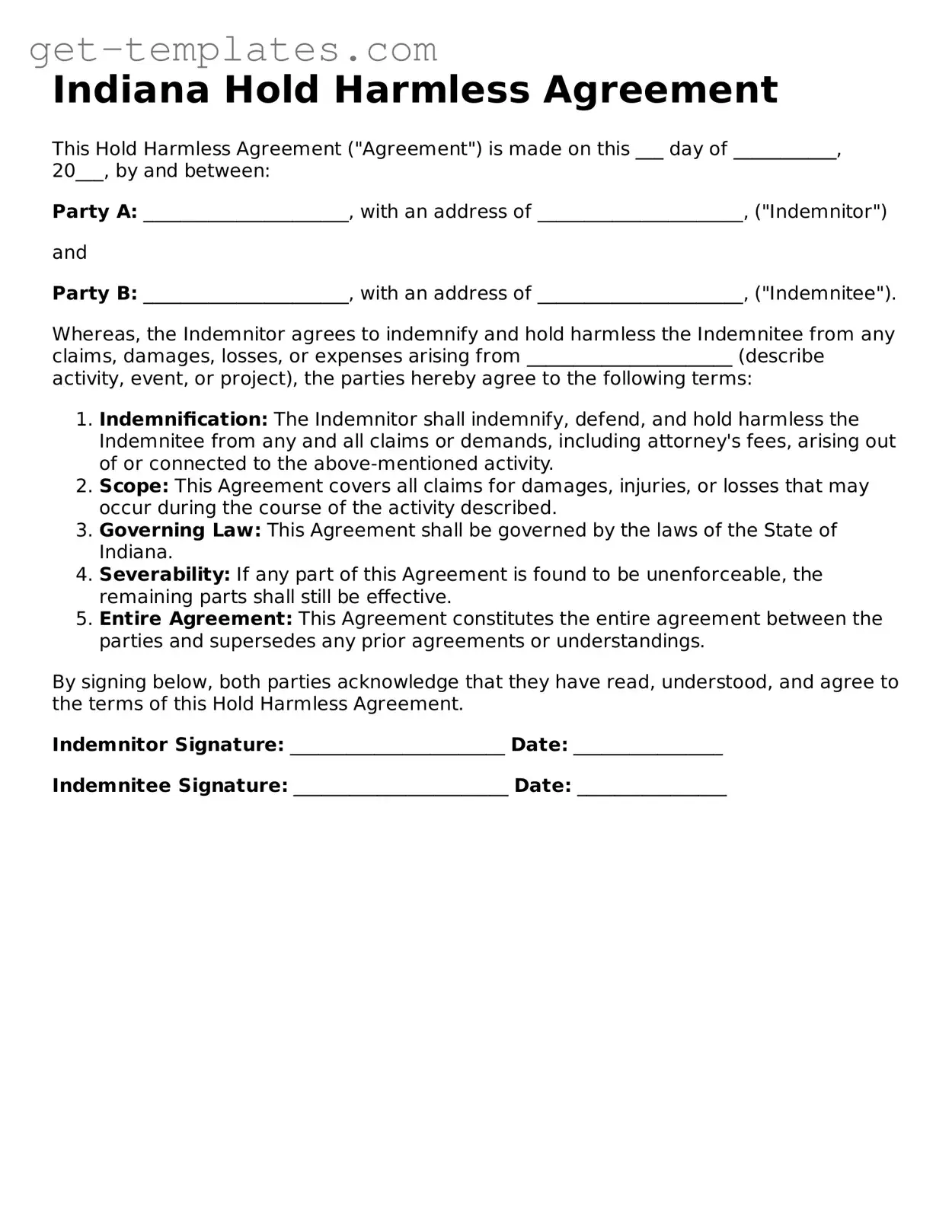Indiana Hold Harmless Agreement
This Hold Harmless Agreement ("Agreement") is made on this ___ day of ___________, 20___, by and between:
Party A: ______________________, with an address of ______________________, ("Indemnitor")
and
Party B: ______________________, with an address of ______________________, ("Indemnitee").
Whereas, the Indemnitor agrees to indemnify and hold harmless the Indemnitee from any claims, damages, losses, or expenses arising from ______________________ (describe activity, event, or project), the parties hereby agree to the following terms:
- Indemnification: The Indemnitor shall indemnify, defend, and hold harmless the Indemnitee from any and all claims or demands, including attorney's fees, arising out of or connected to the above-mentioned activity.
- Scope: This Agreement covers all claims for damages, injuries, or losses that may occur during the course of the activity described.
- Governing Law: This Agreement shall be governed by the laws of the State of Indiana.
- Severability: If any part of this Agreement is found to be unenforceable, the remaining parts shall still be effective.
- Entire Agreement: This Agreement constitutes the entire agreement between the parties and supersedes any prior agreements or understandings.
By signing below, both parties acknowledge that they have read, understood, and agree to the terms of this Hold Harmless Agreement.
Indemnitor Signature: _______________________ Date: ________________
Indemnitee Signature: _______________________ Date: ________________
